Air Operations, Bonin and Volcano Islands Carrier aircraft from Task Group 58.1 and Task Group 58.3 attack Chichi Jima and Iwo Jima. When a Japanese convoy composed of 5 freighters, 2 large landing ships, 1 destroyer, and 2 destroyer-escorts attempts to flee the area, the US Navy carrier aircraft claim all 5 freighters, the 2 landing ships, and 1 destroyer sunk, and escorting US Navy cruisers sink the 2 destroyer-escorts.
VF-19 F6Fs down 2 A6M Zeros over the Iwo Jima area at 1100 and 1240 hours, respectively.
[  | |   ] ]
Air Operations, Carolines FEAF B-24s attack Utagal Island and the airfield on Yap.
[  | |   ] ]
Air Operations, CBI
BURMA
- 10th Air Force B-25s support Allied ground forces advancing on Sahmaw.
- 10th Air Force P-51s support Allied ground forces around Sahmaw and Taungni.
- Fighter-bombers attack a wide range of targets across northern and central Burma.
- 341st Medium Bomb Group B-25s under 14th Air Force control attack the airfields at Hsenwi and Lashio.
- 4 449th Fighter Squadron P-38s attack two bridges at Mongyu.
CHINA
- 341st Medium Bomb Group B-25s attack Mangshih.
- 70 14th Air Force P-40s attack shipping, dumps, and ground troops in the Tungting Lake and Yangtze River areas.
- 32 P-40s attack Tengchung.
- A 5th CACW Fighter Group P-40 downs a Ki-43 'Oscar' fighter over the Siang River at 0555 hours.
- 3rd CACW Fighter Group P-40s down 2 transports near Sinti during the morning.
- A 23rd Fighter Group P-40 downs a D3A 'Val' dive bomber in an engagement near Hengyang at 1400 hours.
[  | |   ] ]
Air Operations, East Indies - V Bomber Command B-24s attack oil facilities at Boela.
- A 475th Fighter Group P-38 downs a Ki-43 'Oscar' fighter over Piroe (Ceram) at 1145 hours.
- A 49th Fighter Group P-38 downs a Ki-43 'Oscar' fighter over Amboina.
[  | |   ] ]
Air Operations, Europe For the first time, at the request of the Russians, fighter-bombers of the US 15th Air Force carry out a huge raid on a number of Rumanian airfields, and land on Russian bases.
The Gloster Meteor jet fighter debuts against V-1s.
RAF BOMBER COMMAND
Daylight Ops:
- 291 aircraft of Nos. 6 and 8 Groups attack the flying bomb sites at Bois de Cassan and Trossy St Maxim in clear visibility. Include in the total are 169 Halifaxes, 112 Lancasters and 10 Mosquitos.
- 2 Halifaxes of No. 6 Group are lost on the Bois de Cassan raid and 2 Lancasters are lost on the Trossy St Maxim raid.
- 288 Lancasters of Nos. 1, 3 and 8 Groups attack the Bec-d'Ambes and Pauillac oil storage sites in clear conditions and without a loss. 27 Serrate Mosquitos are used as escorts to the bombers attacking these 2 sites. This is the first use of Group No. 100 Mosquito fighters in this way. They do not encounter any German fighters.
- 27 Lancasters, 2 Mosquitos and 1 Mustang of No. 617 Squadron attack a railway bridge at Étaples. Some hits are scored but the 1,000-lb bombs used fail to destroy the bridge.
- 3 Mosquitos attache the Forêt de Nieppe storage site without a loss.
Minor Ops:
- 12 Halifaxes lay mines off Brest, 29 aircraft are on Resistance ops and there are 11 OTU sorties.
- 1 Halifax and 1 Lysander are lost on Resistance operations.
A posthumous Victoria Cross is awarded later to Squadron Leader I. W. Bazalgette of No. 635 Squadron, captain of one of the aircraft lost on the all-No. 8 Group raid on Trossy St Maxim. Bazalgette's Lancaster was hit by flak and set on fire while approaching the target but the pilot carried on to release his markers and bombs on the target. (The statement in the VC citation that Bazalgette was Master Bomber for this raid is not correct, although he had acted as Master Bomber on earlier raids.) On leaving the target, the Lancaster dived steeply, almost out of control, but the pilot was able to recover from this and 4 members of his crew were able to bale out. Bazalgette then made a good crash-landing in an attempt to save his wounded bomb aimer and the mid-upper gunner who was overcome by fumes or smoke, but the Lancaster exploded and all 3 men still inside were killed. Squadron Leader Bazalgette and his 2 comrades are buried at the small village of Senantes.
US 8th AIR FORCE
BELGIUM:
- During the morning, 22 3rd Bomb Division B-17s attack coastal defenses at Ostend.
FRANCE:
- 95 1st Bomb Division B-17s and 59 2nd Bomb Division B-24s, escorted by 35 VIII Fighter Command p-47s, are dispatched against V-weapons sites in the Pas-de-Calais area and two coastal batteries. All the primary targets are struck, but bad weather and faulty radar cause nearly 50 heavy-bomber aborts and the diversion of more than half the remaining bombers against targets of opportunity.
- 67 VIII Fighter Command P-47 fighter-bombers attack the Plantlunne Airdrome.
- 1 P-47 and its pilot are lost
- The first experimental attack undertaken under the auspices of Operation APHRODITE, 4 unmanned, television-controlled B-17 flying bombs are dispatched along with guidance and observaton aircraft against four large V-weapons sites. No hits and only one near miss are scored. In fact, one drone bomb crashes in England.
GERMANY:
- 221 1st Bomb Division B-17s attack the Luftwaffe experimental station at Peenemunde.
- 70 1st Bomb Division B-17s attack an aircraft factory at Anklam.
- 110 1st Bomb Division B-17s attack the Andlam Airdrome.
- A total of 307 2nd Bomb Division B-24s attack aircraft-industry targets at Rostock, Schwerin, and Wismar.
- 34 2nd Bomb Division B-24s attack various targets of opportunity.
- 181 3rd Bomb Division B-17s attack an oil refinery at Hamburg.
- 23 3rd Bomb Division B-17s attack the Nordhof Airdrome.
- 7 3rd Bomb Division B-17s attack several targets of opportunity.
- 89 2nd Bomb Division B-24s attack the naval base at Kiel.
- 29 3rd Bomb Division B-24s attack an oil refinery at Hemmingstedt.
- 39 3rd Bomb Division B-24s attack the Husum Airdrome.
- Of a total of 1,186 effective heavy-bomber sorties, 11 B-17s and 4 B-24s are lost
- Escort for the heavy-bomber missions to Germany is provided by 666 VIII Fighter Command fighers. Escort pilots down 37 Luftwaffe fighers over Germany and 1 over Denmark between 1300 and 1600 hours.
  | |   ] ]
Air Operations, New Guinea - V Bomber Command B-24s attack Faan.
- B-25s and A-20s attack the airfield at Nabire and oilfields at Kasim Island and Klamono.
- A-20s and V Fighter Command fighter-bombers attack barges, troops, and dumps east of the Driniumor River and in bypassed areas.
- P-39s attack Pegun Island.
[  | |   ] ]
Atlantic Germant MTBs fire T3D Dackel ('Daschhund') long-range torpedoes at shipping in Seine Bay. This is repeated 5 more nights in August. Only 2 ships are hit.
[  | |   ] ]
CBI
BURMA
On the Salween front, the Chinese succeed in penetrating the town of Teng-chung, where bitter house-to-house fighting takes place. The British 2nd Div, XXXIII Corps, coming up from the area of Imphal, occupies Tamu, across the Burmese frontier.
[  | |   ] ]
Eastern Front The German Army Group North pushes back the troops of the 1st Baltic Front which have reached the Gulf of Riga and reopens the Estonia-Latvia corridor between Riga and the Russian salient north of Jelgava.
NORTHERN SECTOR
The 16th Army launches a fierce counterattack in Latvia, hitting the 51st Army south of Jelgava. Heavy fighting ensues but the German progress is slow.
CENTRAL SECTOR
In Warsaw the Poles gain control of the Mokotow, Czerniakow, Powisle, Old Town and Zoliborz districts but come under increasingly heavy German counterattack. More and more German units, mainly SS, are poured into the city. Some of these units are of the worst type, made up of criminals and murderers, an example being the infamous Dirlewanger Brigade, Elements of the 19th Panzer Divison fight their way across the city from the Praga suburb but encounter fierce resistance.
To the south the 1st Ukrainian Front commits the 5th Guards Army to the fighting at Sandomierz.
[  | |   ] ]
Finland, Home Front Pres Risto Ryti resigns and Carl Mannerheim takes over and forms a 'peace government'.
[  ] ]
Italy Indian and New Zealand troops of the British XIII Corps reach the south bank of the Arno near Florence. Advance guards of the South African 6th Armored Division penetrate into the southern suburbs of the city, from which the Germans have withdrawn after destroying all the bridges over the Arno except the Ponte Vecchio. This successfully concludes the campaign for central Italy by the British 8th Army.
The Allied plans are revised according to proposals from Gen Oliver Leese. The new plan, OLIVE, calls for the main effort to be on the right flank of the British 8th Army in the sector near the east coast. The US 5th Army, which is to be strengthened by attaching the British XIII Corps, is to make a subsidiary attack up the road from Florence to Bologna after the enemy has thinned out in the center. A period of extensive regrouping is begun by the 8th Army in preparation for the coming assault on the Gothic Line in the northern Apennines.
[  | |   ] ]
Marianas
GUAM
The 77th Division succeeds in reaching the O-3 line, overrunning Mt Barrigada, and makes contact with the 3rd Marine Division to its left, closing a dangerous gap. Progress during the day is slowed more by the terrain than by skirmishes with the enemy. The 3rd Marine Division is obliged to hold up its advance on the left flank of the corps in order to tie in with the 77th Division. Gen Geiger prepares to commit the 306th Infantry, which is comparatively fresh, in pursuit toward Mt Santa Rosa. The 1st Provisional Marine Brigade is relieved of its defense duties on the southern flank and is now held in reserve.
[  | |   ] ]
New Guinea In the Aitape area, the Japanese, suffering from casualties, logistic problems, and disease, withdraw southward from in front of South Force in the Afua area after a last desperate attack that costs them over 200 dead. South Force patrols move forward in pursuit against scattered fire and make contact with TED Force. Both the main assault force and the enveloping column of TED Force continue southward in the region between the Driniumor and Niumen Creek to an east-west trail. A Coordinated attack by TED Force and South Force scheduled for this date must be postponed until TED Force reaches the Driniumor.
[  | |   ] ]
Occupied Holland In Amsterdam the Jewish Frank family are betrayed to the Gestapo.
[  | |   ] ]
Occupied Poland The Home Army now controls the Mokowot, Czerniakow, Powisle, Old Town and Zoliborz districts of Warsaw.
[  | |   ] ]
Pacific - The US submarine Ray (SS-270) attack a Makassar-bound Japanese convoy in the Celebes Sea sinking the army cargo ship Koshu Maru (2612t).
- The US submarine Sterlet (SS-392) sinks the Japanese guardboats Miyagi Maru (248t) and Zensho Maru (99t) northwest of Chichi Jima.
[  | |   ] ]
United States, Home Front The XP-47J experimental fighter aircraft attains a speed of 811 km/hr in level flight.
[  | |   ] ]
United States, Planning JCS planners schedule the assaults on Leyte and Mindanao to begin on December 1, 1944. The attack on Formosa is scheduled for February 15, 1945. From Formosa, an air and sea blockade would be established while a build-up of forces for the invasion of the Japanese home islands is completed.
[  | |   ] ]
Volcano Islands Adm Joseph J. Clark leads two groups of TF 38 in attacks on Iwo Jima and Chichi Jima. One Japanese destroyer, the Matsu, and two transports, Nos. 4 and 133, are sunk and considerable damage done.
[  ] ]
Western Front In Brittany the German forces, Gen Wilhelm Farmbacher's XXV Corps, pull back to major ports, St Malo, Brest, Lorient and St Nazaire (these last two will hold out until May 1945). The 6th Arm Div advances on Brest, the 4th moves northwest toward Vannes. Rennes is captured by the 13th Regt, 8th Div. In the US 1st Army sector, VII Corps reinforces its positions at Mortain, and some of its units move southward toward Mayenne.
The XIX Corps has to face a new German counteroffensive, while the V Corps reaches its objectives in the Vire sector. In the British sector Gen Montgomery order the Canadian 1st Army under Gen Harry Crerar to advance in the direction of Falaise as quickly as possible. The 43rd Div of XXX Corps captures Hermilly while the 50th Div captures Villers-Bocage.[WF]
[  | |   ] ]
Images from August 4, 1944
Clearing Rubble near Caen
|
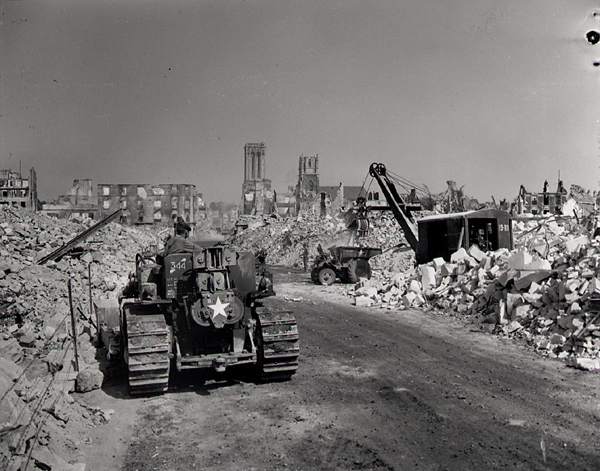 |
|
A Sherman Tank Enters Florence
|
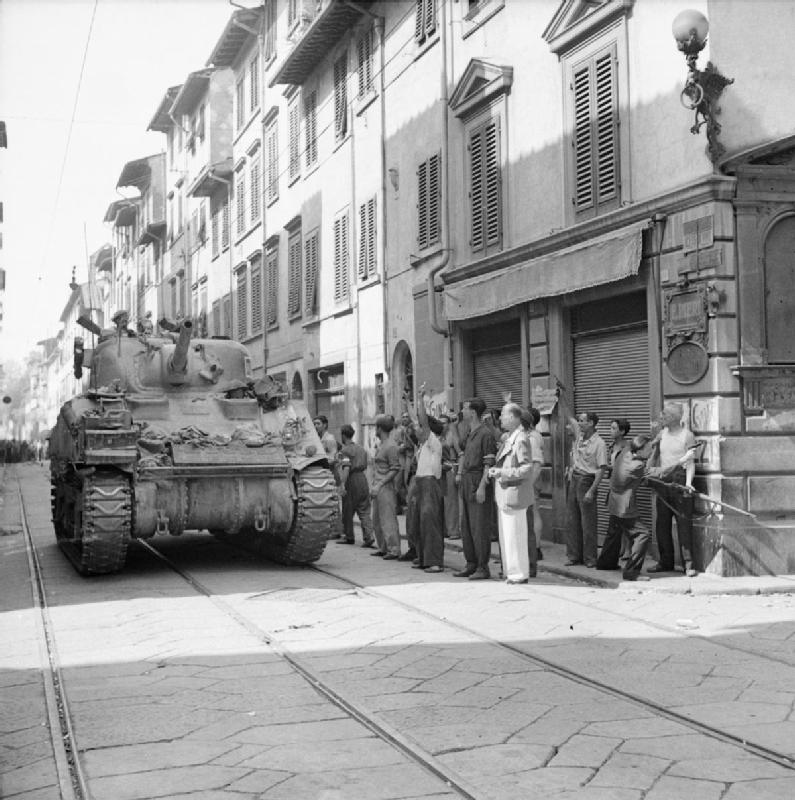 |
|
Moving Toward Ondefontaine
|
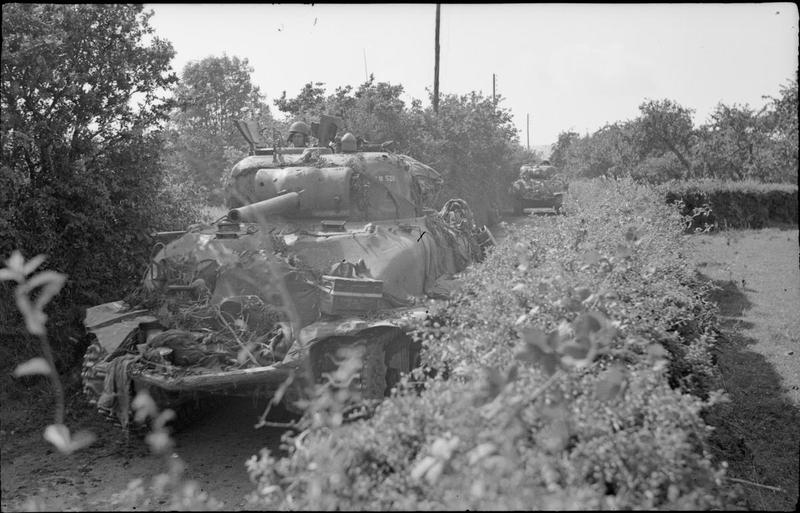 |
|
Sherman Tanks Pass a Column of Churchills
|
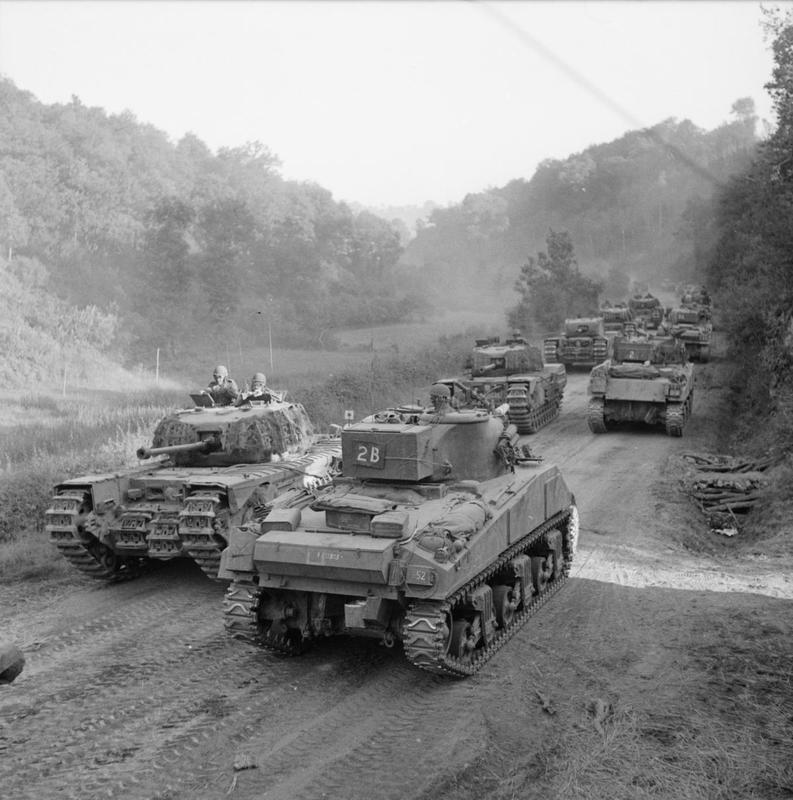 |
|
Searching for Mines
|
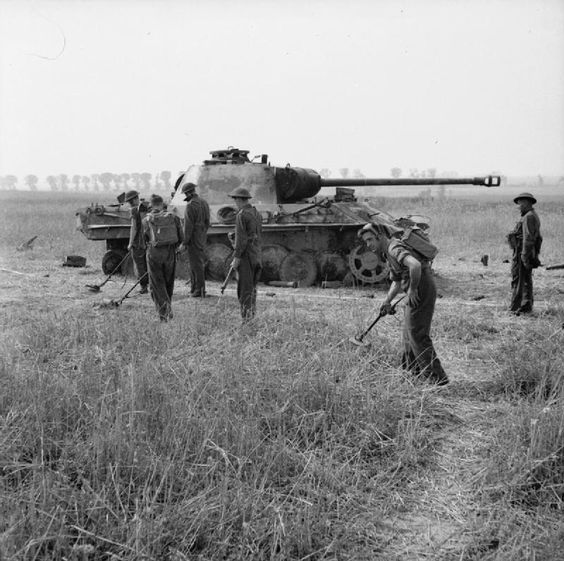 |
|
Sherman Artillery Tank Enters Florence
|
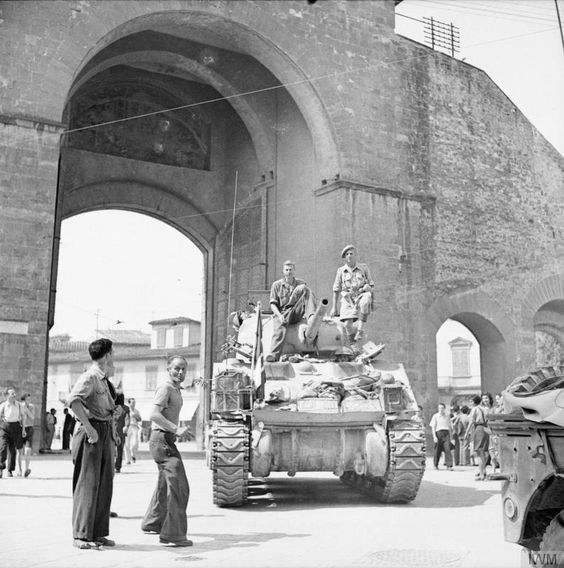 |
|
Attack on Oil Storage Depot
|
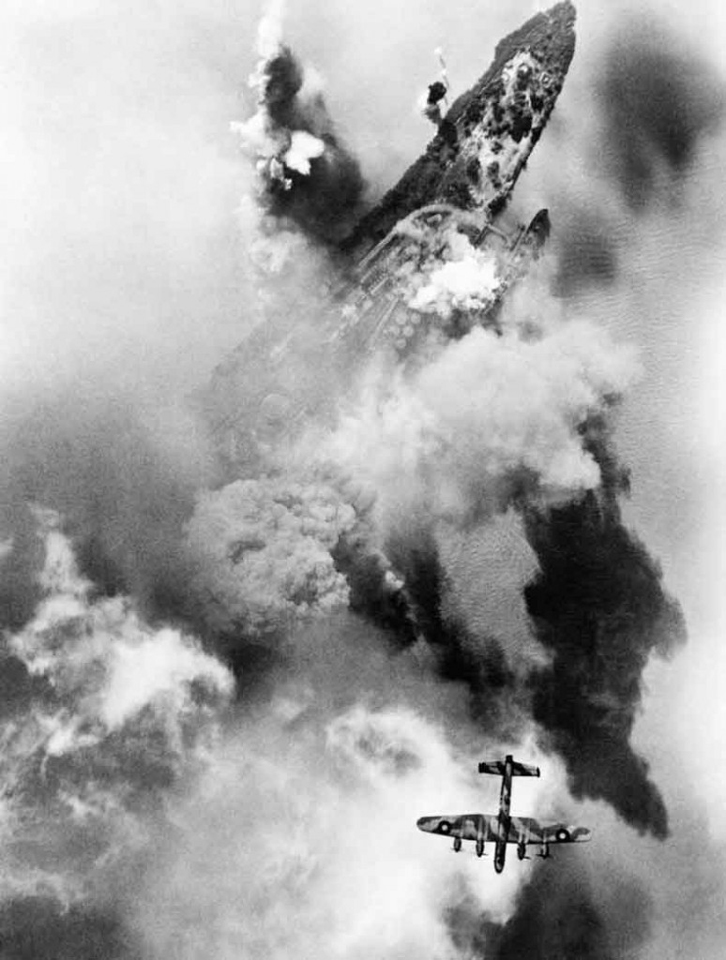 |
|
Inspecting a Jeep Cut In Two
|
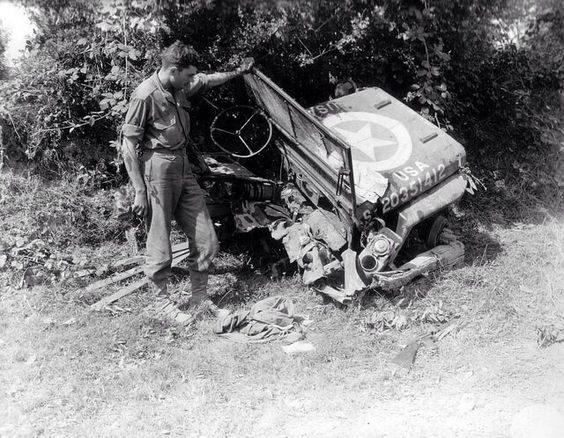 |
|
Citizens of Florence Greet Liberators
|
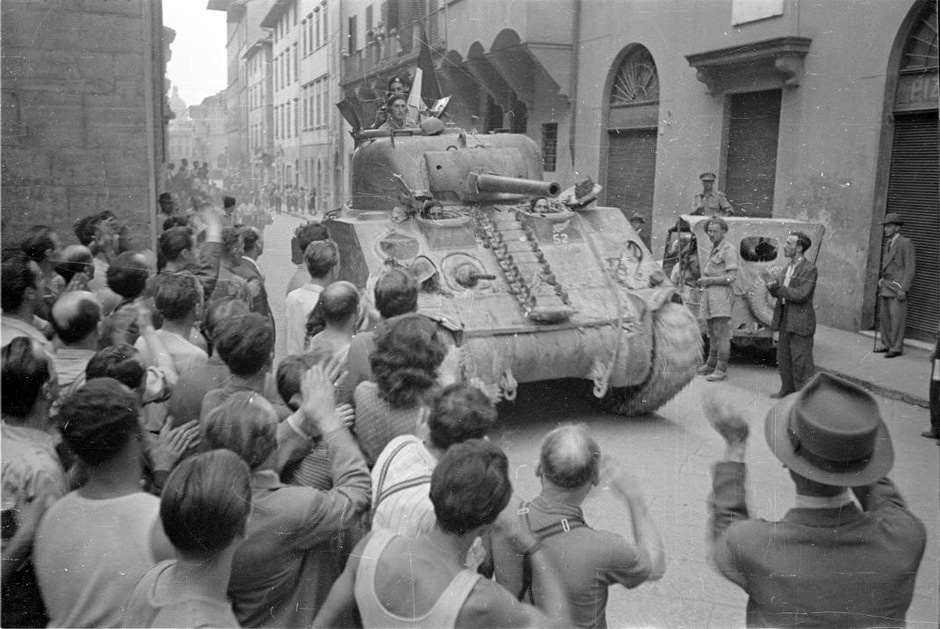 |
|
On the Road to Montchamp
|
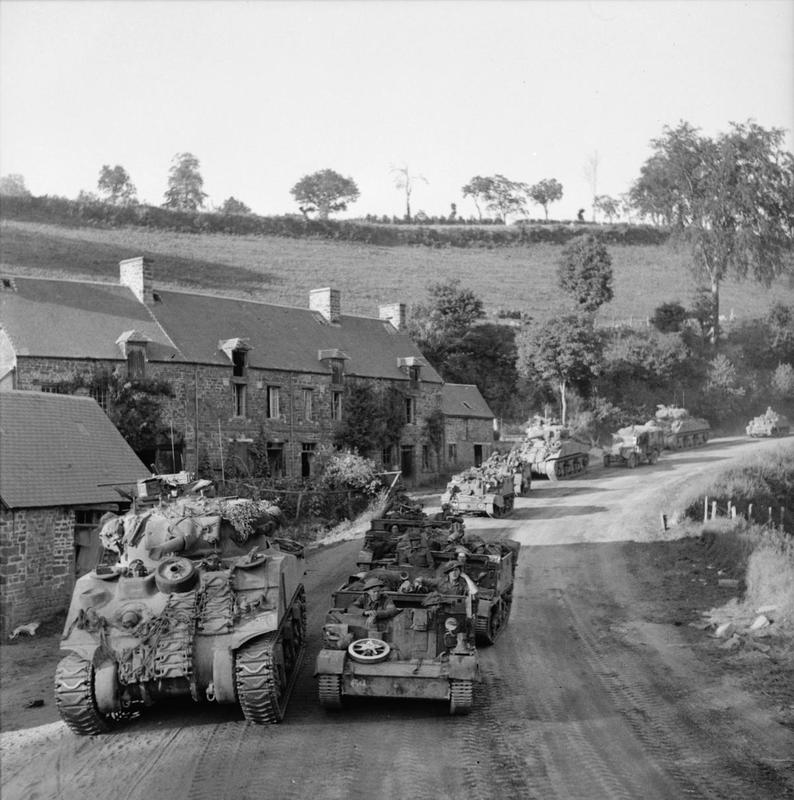 |
|
Moving along the Road toward Florence
|
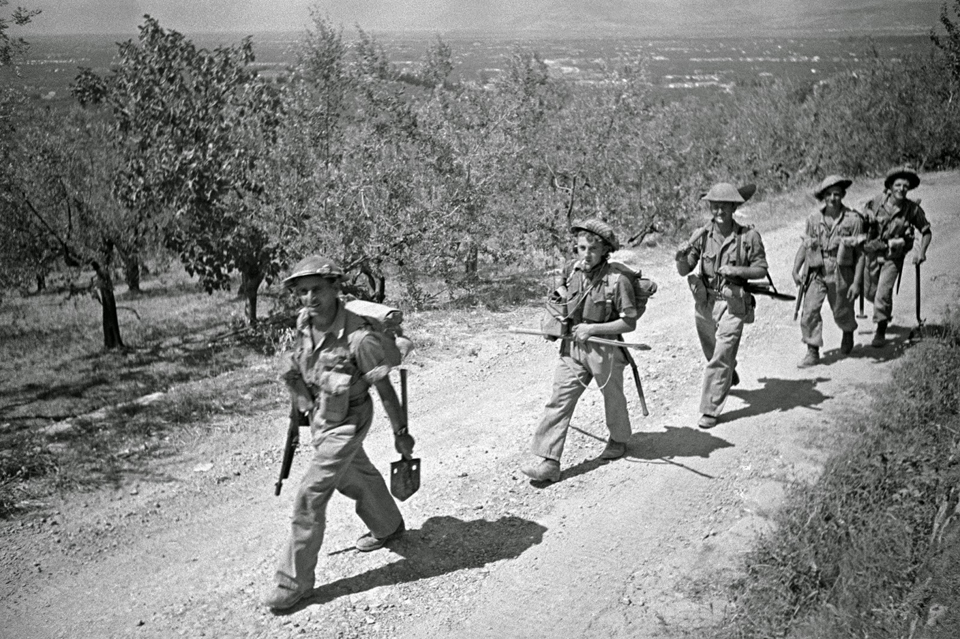 |
|
Finnish President Mannerheim
|
 |
|
|











